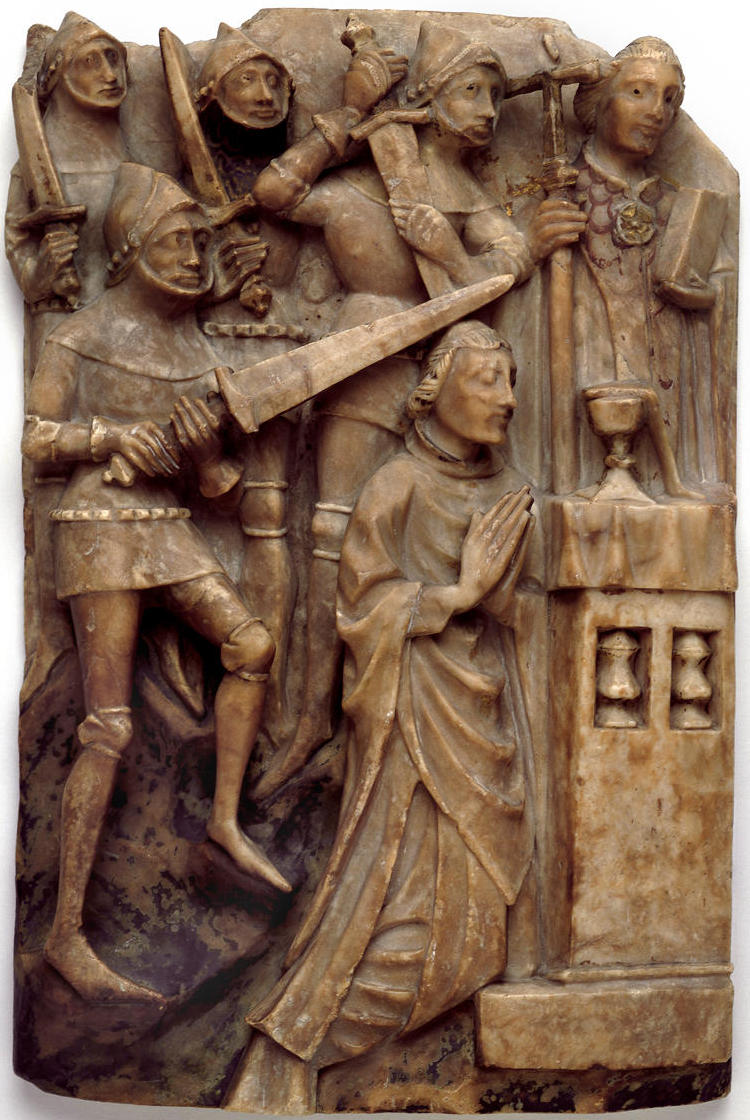Alabaster panel with a scene of the Martyrdom of St Thomas Becket
|
|  |
|
|  |
Description:
Alabaster panel carved and painted with green paint; depicting the murder of St Thomas à Becket. Saint Thomas kneels before the altar on which stands a chalice, while two of the armed knights strike at his head with their swords, one from behind and one from above. Two other knights stand behind while the clerk, Edward Grim, holding cross and book, stands behind the altar. The contrast between the figures of the soldiers, and of the saintly Thomas and his clerk, is clear. The focus of the scene is concentrated on the saint's head which was to become an object of pilgrimage itself, and on his long hands clasped in prayer. Both lead the eye to the chalice on the altar, a symbol of Christ's sacrifice.
Date: 1450-1500
Production place: England
Materials: alabaster
Technique:carved
Dimensions:
Height: 385 millimetres
Width: 284 millimetres
Depth: 45 millimetres
Weight: 6 kilograms
Curator's comments:
Blurton 1997
In 1170 Saint Thomas was killed as he celebrated Mass in Canterbury Cathedral, by four knights encouraged by Henry II.
British Museum number 1890,0809.1
This alabaster panel shows Thomas Becket (?1118-70), Archbishop of Canterbury, kneeling in prayer before an altar, on which stands a chalice. Four knights approach from behind and two of them attack him with swords. The figure with the cross, behind the altar, represents Edward Grim, a clerk from Cambridge who witnessed the atrocity. The murder was committed in a side chapel of Canterbury Cathedral, therefore violating the laws of Sanctuary, which ought to have given Becket immunity from arrest or molestation in a holy place. The knights responsible were Reginald Fitzurse, Richard le Bret, Hugh de Moreville and William de Tracy. They acted on a misunderstood instruction from King Henry II who was in dispute with Becket over the relative privileges of Church and Crown.
Alabaster panels such as this are of a standard size, and would have belonged to larger altarpieces. Alabaster is easy to carve and allows the creation of fine details. It can also take colouring, gilding and polishing. Some original polychromy and gilding survives on this example. Carved alabaster was among England's most successful exports of art in the Middle Ages and they survive in collections all over western Europe.
Picture Source: Teaching History with 100 Objects
|
Other Medieval illustrations of the Murder of Thomas Becket Other 15th Century Illustrations of Costume & Soldiers |